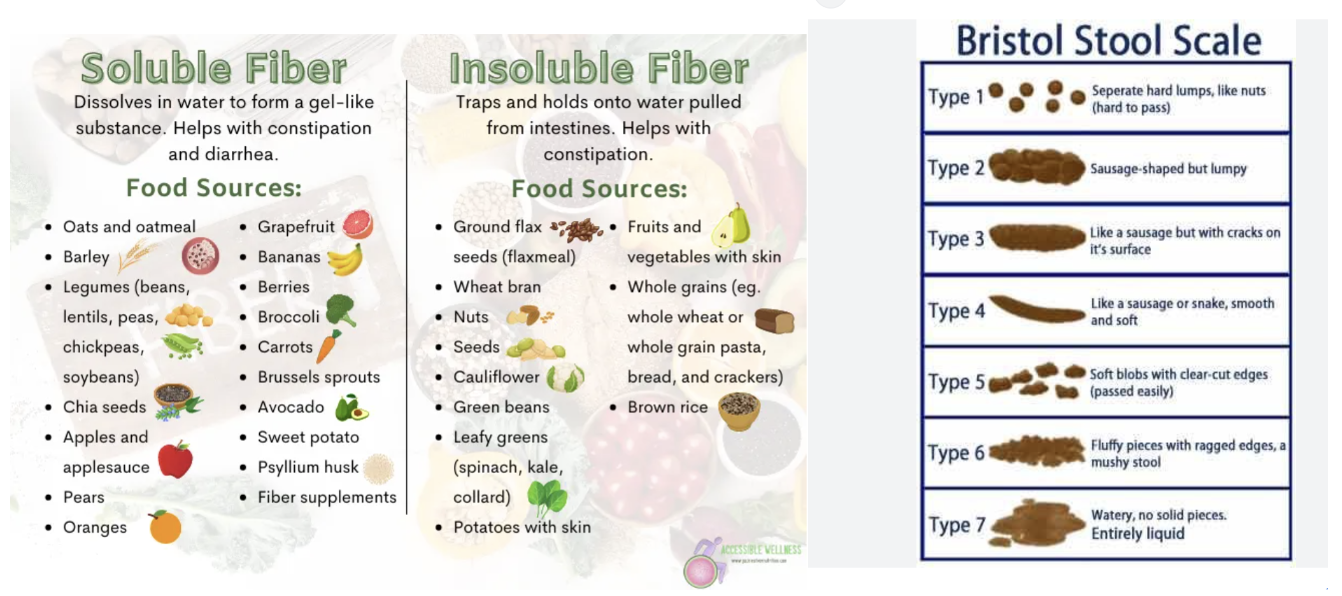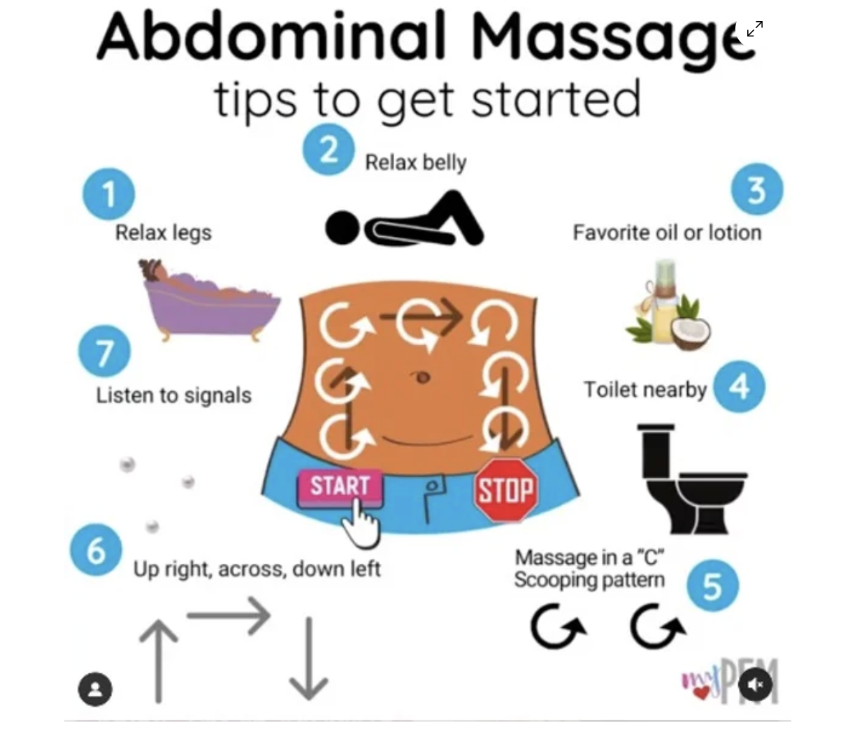Now let’s get into some tips. When I help people manage their constipation, I like to look at three things listed below. In this blog post, we will focus on #1 and #2. Stay tuned for August where we will talk more about HOW you go.
- Consistency of stool
- Frequency of bowel movements
- Bowel mechanics (how you go)
Consistency
The ideal stool is smooth and soft, shaped like a sausage (Type 3 and 4 below). If we have small and hard stools (Type 1-2 below), there is often an issue with our diet. This can include things like not getting enough fiber, eating too many processed foods, eating too many carbohydrates, and not drinking enough liquids. If you are unsure what your fiber and fluid intake looks like, a good starting place is to track these two items for 3-5 days. Try to pick “average” days to track. Once you have an idea where you are you can see if it falls within the recommended “norms”. For most people, the recommendation is 30-35g of fiber per day. Both soluble and insoluble fiber are helpful. However, insoluble fiber tends to help more as it works to draw water to the colon. (See fiber chart below for ideas).
The next step is that we need to balance that fiber intake with water intake. If we eat a bunch of fiber but don’t drink enough water, this can actually make constipation worse. The standard 6-8 cups of water per day is a good starting point. After making adjustments to the diet, you would give it a few weeks and monitor stool consistency. You may need to keep making adjustments to find the right balance for your body.
Frequency of stool is the next area to focus on. Ideal frequency is at least 3x per week and up to 3x per day. An important thing to consider with frequency is the mechanics of our colon. Our body has two main reflexes that help with bowel movements. The first is the gastrocolic reflex. When we eat something, this reflex stimulates the bowels to empty, to make room for new “waste”. This reflex is often strongest in the morning, after we eat breakfast. If you have decreased frequency, an important step is to eat breakfast and regulate meal times. This will help stimulate this reflex and create a predictable “schedule” for our bowels. Oftentimes, we are busy getting ready for work, helping kids get ready for the day, ect. so we don’t take the time to go. Picking a set time, 20-30 minutes after a meal, can also help regulate the bowels.
Another important reflex is the defecation reflex. This reflex is how our bowels tell our brain to go. In a simplified explanation: the defecation reflex occurs when stool moves through the colon into the rectum. Once the stool is in the rectum, a message is sent to the brain, telling us we need to have a bowel movement. We can then contract our external anal sphincter to resist this urge or relax it to have a bowel movement. If we are consistently resisting the urge to go or delaying it for a more convenient time, it can disrupt this normal signaling and lead to a “backup” of stool.
In order for these reflexes to work properly, stool needs to be regularly moving through the colon, through peristalsis. Peristalsis can be slowed down by medications (especially pain meds), pregnancy, surgery, lack of fluid, and other medical conditions. One way we can help this natural peristalsis to speed up is through bowel massage. I recommend people perform bowel massage after a meal or before bed. Below is an image with good tips. Use firm pressure and always start on the bottom right of your abdomen.
- Make sure you are eating enough fiber and drinking enough water. This can vary from person to person and the best way to determine if your intake is working, is stool consistency. Type 3-4 is ideal.
- Choose a consistent time to have a bowel movement (morning after breakfast or 20-30 minutes after a meal works well).
- Give yourself time to have a bowel movement. Schedule 10-15 minutes in your morning routine to go
- Perform bowel massage to help stimulate peristalsis. This can be done throughout the day, after meals or one time at night before bed. Use firm pressure and always start on your right side and move to the left side.
- Don’t consistently delay a bowel urge. If you get an urge, try to get to a bathroom within 5-10 minutes.
Finally, if you are still struggling after trying these tips: reach out! Pelvic floor PT can help by creating a bowel routine specific to you. We can also assess the pelvic floor muscles to determine if they are contributing to your bowel troubles!

